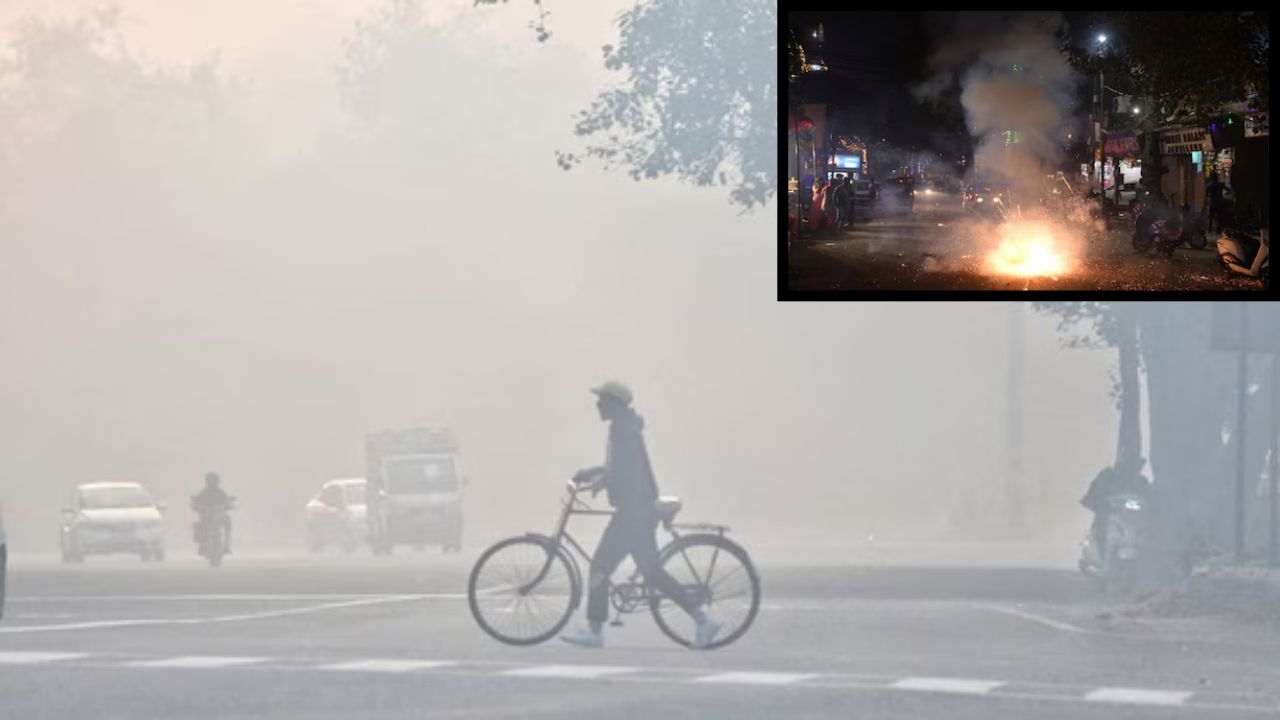 English
English

A day after Diwali, Delhi woke up under a thick blanket of haze. The mercury soared to 32°C while the AQI breached 400, choking the city’s lungs. What caused this toxic turn after the festival of lights- and when will relief arrive?

Delhi AQI in severe category.
New Delhi: A day after Diwali celebrations, Delhi woke up to hazy skies and poor visibility on Tuesday morning. The city to witness hazy sunshine throughout the day, with temperatures hovering between 24°C and 32°C.
According to the weather department, the afternoon will be warmer than usual for late October, peaking around 31–32°C. Despite the bright sun, the presence of haze indicated high levels of particulate pollution in the atmosphere.
Delhi wakes up to a mild and hazy Sunday; AQI remains a concern ahead of Diwali
Winds remained calm, reducing the natural dispersion of pollutants. Evening temperatures were expected to stay around 28–29°C, with hazy moonlight dominating the skyline.
The air quality in Delhi deteriorated sharply post-Diwali due to extensive firecracker bursting on Monday night. According to the Central Pollution Control Board (CPCB), the average AQI touched 333 late on Monday breaching the “very poor” mark and worsened further on Tuesday morning.
Out of 38 monitoring stations, 36 were recorded in the red zone, with AQI values above 300. In several pockets such as Anand Vihar, Jahangirpuri, and RK Puram, the AQI crossed 400, placing them in the “severe” category.
Environmental experts attributed the spike to firecracker smoke, calm winds, and cooler temperatures, which trapped pollutants near the surface. The overall air quality across Delhi-NCR, including Noida, Ghaziabad, and Gurugram, remained in the “very poor” to “severe” range.
With the worsening air quality, the Commission for Air Quality Management (CAQM) has enforced Stage-II of the Graded Response Action Plan (GRAP). Under this, authorities have intensified street cleaning, banned open waste burning, and advised citizens to minimize outdoor exposure. Construction dust and vehicular emissions have also been identified as major contributors to the pollution spike.
Environmental officials have warned that without a significant change in weather such as increased wind speed or rainfall; pollution levels are likely to remain high for the next 24–48 hours.
GRAP Phase 2 Implemented in Delhi-NCR Amid Rising Pollution Ahead of Diwali
Health experts have urged residents to take precautions against toxic air. Those with asthma, bronchitis, or cardiac issues have been advised to stay indoors and use air purifiers if available. Even healthy individuals are being cautioned to avoid strenuous outdoor activities.
Doctors recommend using N95 or equivalent masks when stepping outside and maintaining adequate hydration. Schools have also been advised to reduce outdoor sports activities in the coming days.